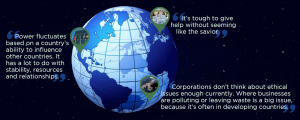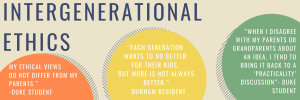
Almost everyone at Duke has a friend who is in a global health class or knows someone who has participated in a global health project abroad, but what is global health? This week, Team Kenan asked Duke students about their definition of global health and their general thoughts on the field.
When asked about what global health is, many students said they were not sure or “think it is like health policy stuff”. However, students who were involved in the field described global health as the act of helping other countries. One student defined global health as “the idea that different health interventions can help developing populations”.
Students who were involved in global health research spoke positively about the field stating that “it is important to exchange health knowledge” and “understand how different populations can be different health-wise”. However, non-global health students seemed to think differently about the field. Those students thought that global health programs were “white savior complex based” and that “it takes a particular type of doctor to believe that they don’t have to help the depravity in the US, rather they go abroad to tackle issues that are in their own backyard”.





